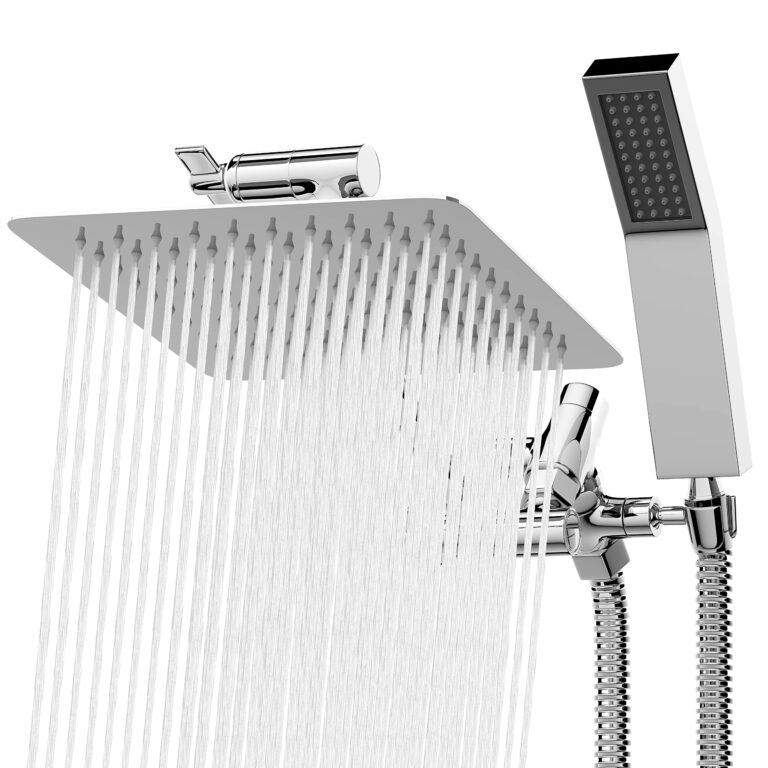Can You Use Yellow Romex With White: Electrical Wiring Tips
Yes, you can use yellow Romex with white Romex. They serve different purposes but can coexist safely in the same installation.
Understanding the differences between yellow and white Romex is crucial for any DIY enthusiast or professional electrician. Yellow Romex typically indicates 12-gauge wire, suitable for heavier loads like kitchen appliances and outlets. White Romex, on the other hand, usually signifies 14-gauge wire, which is ideal for general lighting circuits.
Knowing when and how to use each type ensures a safe and efficient electrical system in your home. This blog will explore their uses, compatibility, and best practices to help you make informed decisions in your electrical projects. Stay tuned to learn more about the right way to use yellow and white Romex together.
Introduction To Romex Wiring
Wiring a home can seem like a daunting task, but with the right knowledge, it becomes much simpler. One common name you’ll come across in home wiring projects is Romex. But what is Romex, and can you use yellow Romex with white? Let’s dive into the basics of Romex wiring to understand more.
What Is Romex?
Romex is a brand name that’s become synonymous with non-metallic (NM) sheathed electrical cable. It’s like calling every tissue a Kleenex. Romex cables have been a staple in residential wiring for decades. They consist of multiple conductors encased in a plastic sheath. This sheath protects the wires and keeps them bundled together, making installation a breeze.
Color Coding In Romex
When you look at Romex cables, you’ll notice they come in different colors. These colors aren’t just for aesthetics – they signify the cable’s gauge (or thickness) and its intended use. Here’s a quick guide:
| Color | Gauge | Use |
|---|---|---|
| White | 14-gauge | 15-amp circuits (general lighting, outlets) |
| Yellow | 12-gauge | 20-amp circuits (kitchen, laundry) |
| Orange | 10-gauge | 30-amp circuits (appliances like air conditioners) |
So, can you use yellow Romex with white? Yes, you can, but it’s essential to understand their different applications. For instance, using a yellow Romex (12-gauge) on a 15-amp circuit meant for white Romex (14-gauge) is safe. However, you wouldn’t want to use a 14-gauge wire on a circuit that requires a 12-gauge wire.
By understanding the basics of Romex wiring and its color coding, you can ensure a safer and more efficient electrical setup in your home. Remember, if you’re ever in doubt, consulting a professional electrician is always a good idea.
Differences Between Yellow And White Romex
When it comes to wiring your home, you might have come across different types of Romex cables, particularly yellow and white. But what exactly sets them apart? Let’s dive into the key differences between yellow and white Romex, focusing on Voltage Ratings and Common Uses. Understanding these differences will not only help you make better decisions but also ensure the safety and efficiency of your electrical projects.
Voltage Ratings
One of the primary differences between yellow and white Romex is their voltage ratings. Here’s a quick rundown:
| Color | Voltage Rating |
|---|---|
| Yellow | 20 amps |
| White | 15 amps |
Yellow Romex is typically rated for 20 amps, making it suitable for circuits that require more power. Think of appliances like microwaves or air conditioning units. On the other hand, White Romex is rated for 15 amps. It’s ideal for lighter household circuits, such as lighting and outlets.
Common Uses
Another important distinction lies in their typical applications. Let’s break it down:
- Yellow Romex: Often used in kitchens, bathrooms, and laundry rooms where higher power appliances are common.
- White Romex: Commonly found in general lighting circuits and outlets in bedrooms, living rooms, and hallways.
Imagine you’re setting up your new home office. You’ll probably use white Romex for your lighting and basic outlets. But if you plan to install a high-powered device like a space heater, yellow Romex is your go-to.
In essence, choosing the right Romex cable isn’t just about color. It’s about understanding your power needs and ensuring the safety and functionality of your home’s electrical system. So next time you’re in the hardware store, you’ll know exactly which one to pick up!
Safety Considerations
When dealing with electrical wiring, safety should always be the top priority. Understanding the differences between yellow Romex and white Romex can help ensure safe and efficient installations. Both types of wires serve specific purposes and have distinct safety considerations.
Code Compliance
Using the correct color Romex for your project ensures code compliance. Yellow Romex typically carries 12-gauge wires used for 20-amp circuits. White Romex, on the other hand, contains 14-gauge wires suitable for 15-amp circuits. Mixing these wires can lead to code violations and unsafe conditions.
Fire Hazards
Incorrect wire usage can create potential fire hazards. Using 14-gauge white Romex on a 20-amp circuit can cause overheating. This can lead to melting insulation and possible fires. Ensuring proper wire gauge for the circuit amperage is crucial for fire prevention.

Credit: www.hunker.com
When To Use Yellow Romex
Yellow Romex is typically used for 20-amp circuits in homes. White Romex is often used for 15-amp circuits. Using yellow Romex with white is possible if adhering to appropriate amp ratings.
Yellow Romex, also known as 12-gauge wire, is a versatile wiring option. It is ideal for circuits needing more power than standard 14-gauge wire. Knowing the right situations to use Yellow Romex can ensure safety and efficiency in your home.High-load Circuits
Yellow Romex is perfect for high-load circuits. It handles more power without overheating. This is crucial for appliances that draw a lot of current. For example, electric water heaters and air conditioning units. These appliances need a wire that can handle their load safely. Yellow Romex meets this need effectively.Kitchen And Laundry Rooms
Kitchens and laundry rooms often have high power demands. Appliances like ovens, microwaves, and washers need more power. Yellow Romex is well-suited for these rooms. It provides the necessary capacity to power these heavy-duty appliances. Ensuring your wiring matches your power needs is essential. Yellow Romex helps keep your home safe and your appliances running smoothly. “`When To Use White Romex
White Romex is ideal for 15-amp circuits like lighting. Yellow Romex, however, suits 20-amp circuits, including outlets. Choose based on circuit requirements.
When it comes to home wiring projects, choosing the right type of Romex cable is crucial. White Romex cable, also known as NM (non-metallic) cable, is commonly used for specific applications in residential wiring. It is essential to understand when to use white Romex to ensure safety and compliance with electrical codes.General Lighting
White Romex is ideal for general lighting circuits in homes. It typically handles 15-amp circuits, which are standard for lighting. This cable is suitable for wiring ceiling lights, wall sconces, and other light fixtures. Using white Romex for lighting ensures that your circuit is appropriately rated for the load it will carry.Receptacles
White Romex is also used for 15-amp receptacles. These are the outlets you find in most living spaces, such as bedrooms, living rooms, and dining rooms. By using white Romex, you provide a safe and reliable connection for plugging in lamps, TVs, and other low-power devices. Always check local codes to ensure compliance with electrical standards.Mixing Yellow And White Romex
Yellow Romex and white Romex can be used together in different parts of your home. Just make sure to follow local electrical codes and safety guidelines.
Using different colored Romex can cause some confusion. Each color has a specific purpose. Yellow Romex is often used for 20-amp circuits. White Romex is usually for 15-amp circuits. Mixing these wires can lead to issues. Let’s delve into the potential confusion and best practices.Potential Confusion
Mixing yellow and white Romex can confuse electricians. They may assume the wrong amperage. This can lead to safety hazards. Incorrect wiring can cause overheating. Overheating can result in fires. It’s vital to keep wiring clear and organized. Proper labeling is essential.Best Practices
Use color-coded wires for their intended purpose. Ensure yellow Romex is for 20-amp circuits. Use white Romex for 15-amp circuits. Label wires clearly if mixed colors are necessary. Always double-check your work. This ensures safety and compliance with codes. Keep your work neat and organized. This helps avoid confusion in the future. “`Tools And Materials Needed
Before you start working with yellow and white Romex, gather the necessary tools and materials. Having the right equipment ensures safety and efficiency. This section will guide you through the essential tools and additional accessories needed.
Essential Tools
You will need a wire stripper. It helps remove the insulation from the wire ends. A voltage tester is crucial. It checks if the wires are live. A utility knife can be handy. Use it to cut the Romex cable to the desired length. Don’t forget a screwdriver. You will need it for connecting wires to outlets and switches.
Additional Accessories
Get some wire nuts. They secure the connections between wires. Electrical tape is necessary. It provides extra insulation and safety. A fish tape might be useful. It helps pull wires through conduits. Cable staples are essential. They keep the Romex cable in place. Finally, a flashlight can be helpful. It provides better visibility in dark areas.

Credit: www.youtube.com
Diy Vs Hiring A Professional
When it comes to electrical work like using yellow Romex with white, many homeowners find themselves at a crossroads: should they tackle the project themselves or call in a professional? This decision isn’t always easy. Each option has its own set of advantages and disadvantages. Let’s dive deeper into both sides to help you make an informed choice.
Pros And Cons Of Diy
Taking on a DIY project can be both rewarding and challenging. Here’s a closer look at the pros and cons:
- Pros:
- Cost Savings: You can save money on labor costs.
- Learning Experience: It’s a great way to learn new skills.
- Control: You have full control over the project.
- Cons:
- Safety Risks: Electrical work can be dangerous if not done correctly.
- Time-Consuming: DIY projects often take longer than expected.
- Potential Mistakes: Errors can lead to costly repairs or hazards.
Benefits Of Professional Help
Hiring a professional for your electrical work comes with its own set of benefits. Here’s why it might be a good idea:
- Expertise: Professionals have the training and experience to handle electrical work safely and efficiently.
- Time-Saving: They can complete the job faster than a DIYer, allowing you to focus on other tasks.
- Peace of Mind: Knowing the job is done correctly reduces stress and potential hazards.
- Warranty: Many professionals offer a warranty on their work, providing added security.
In conclusion, whether you decide to take the DIY route or hire a professional depends on your comfort level, budget, and the complexity of the job. If you’re unsure, it’s always best to consult with a professional to ensure safety and compliance with local codes.

Credit: www.reddit.com
Frequently Asked Questions
Can I Use Yellow Romex Instead Of White?
Yes, you can use yellow Romex instead of white. Yellow Romex is typically for 12-gauge wire, while white is for 14-gauge wire.
Does The Color Of Romex Matter?
Yes, Romex color matters. It indicates the wire gauge and its specific use. For example, white is 14-gauge, yellow is 12-gauge, and orange is 10-gauge.
Is It Okay To Mix 12 And 14 Gauge Wire?
No, mixing 12 and 14 gauge wire is not recommended. It can cause overheating and potential fire hazards. Always use the correct wire gauge for the circuit.
Can You Use Yellow Romex For Lights?
Yes, you can use yellow Romex for lights. It typically indicates 12-gauge wire, suitable for 20-amp circuits.
Conclusion
Using yellow Romex with white is not recommended. Yellow Romex indicates 12-gauge wire, typically used for 20-amp circuits. White Romex indicates 14-gauge wire, suitable for 15-amp circuits. Mixing them can cause confusion and safety issues. Always follow electrical codes and guidelines.
Proper wiring ensures safety and efficiency. Consult an electrician for any doubts. Clear understanding and correct usage prevent future problems. So, stick to the right Romex for each job. Your safety and your home’s safety depend on it.

My name is Maria, A professional merge game player with years of experience mastering games like Merge Dragons, Merge Gardens, Merge Mansion, and more. My passion for uncovering the best strategies, solving tricky puzzles, and discovering hidden secrets led her to create MergeGameplay.com.





